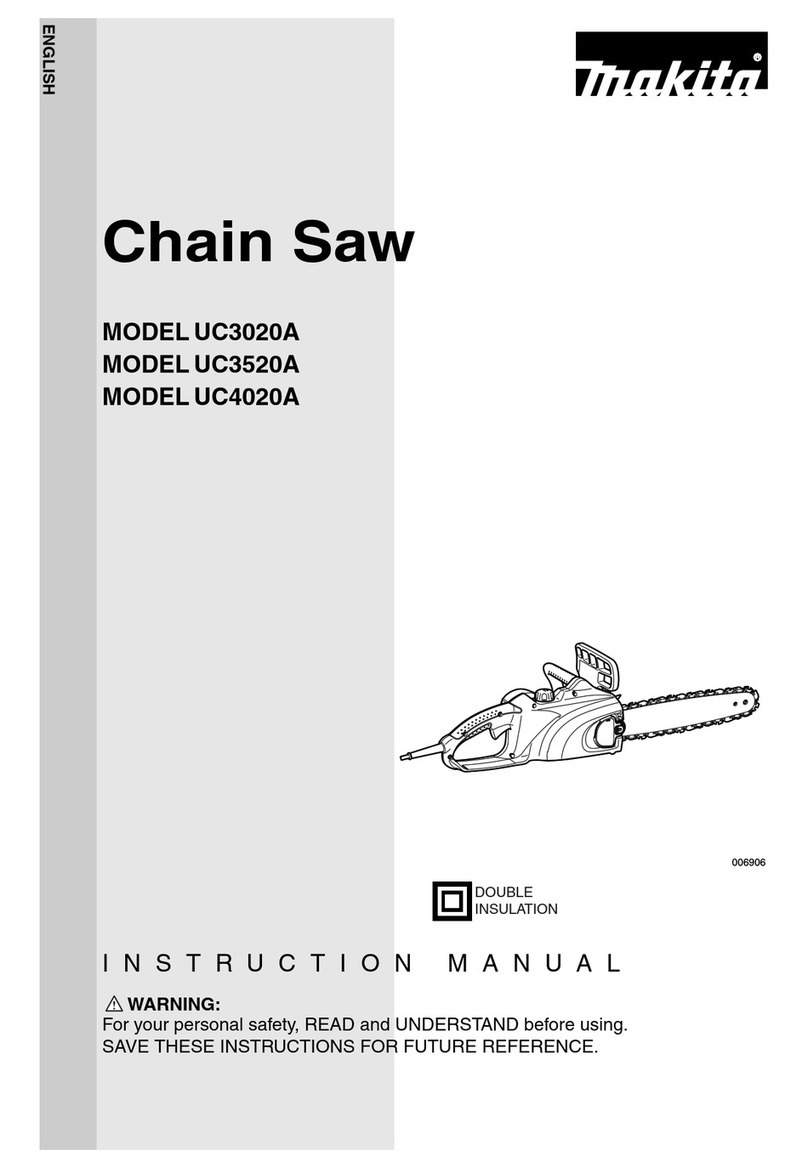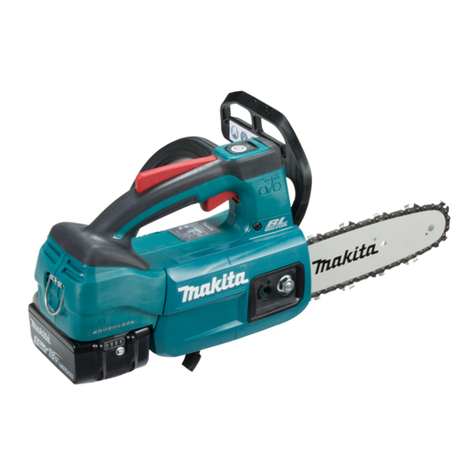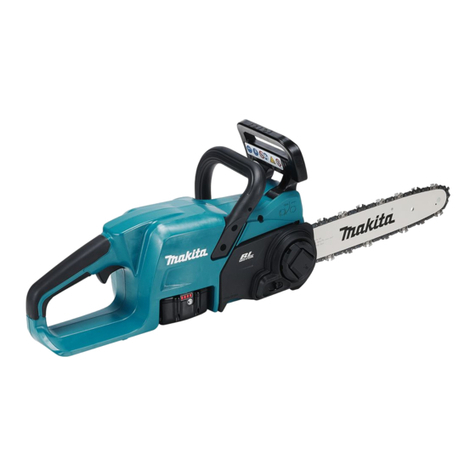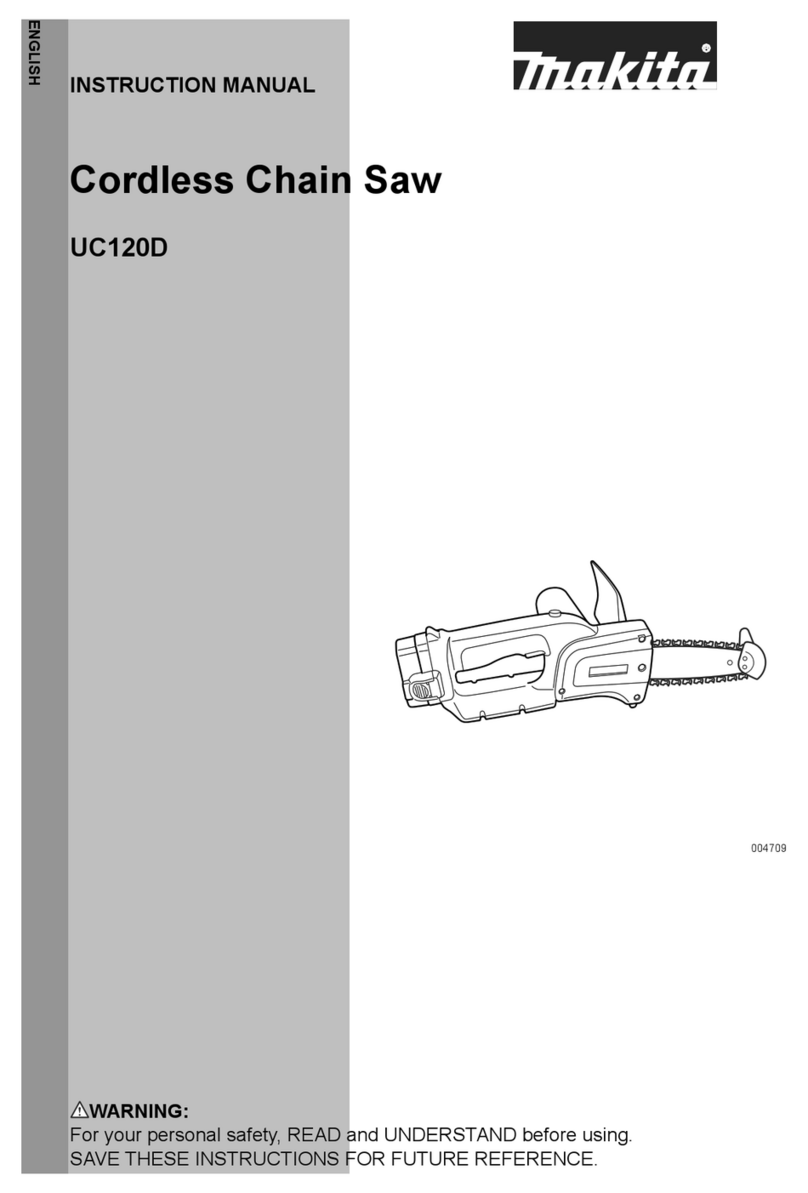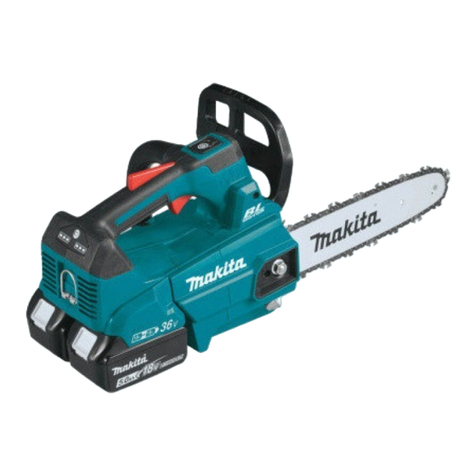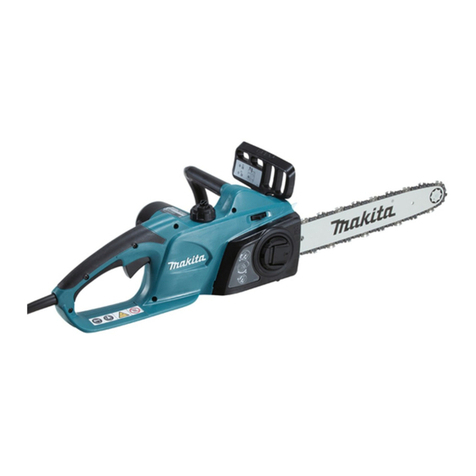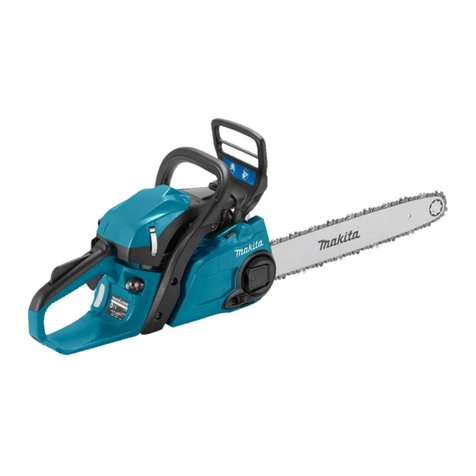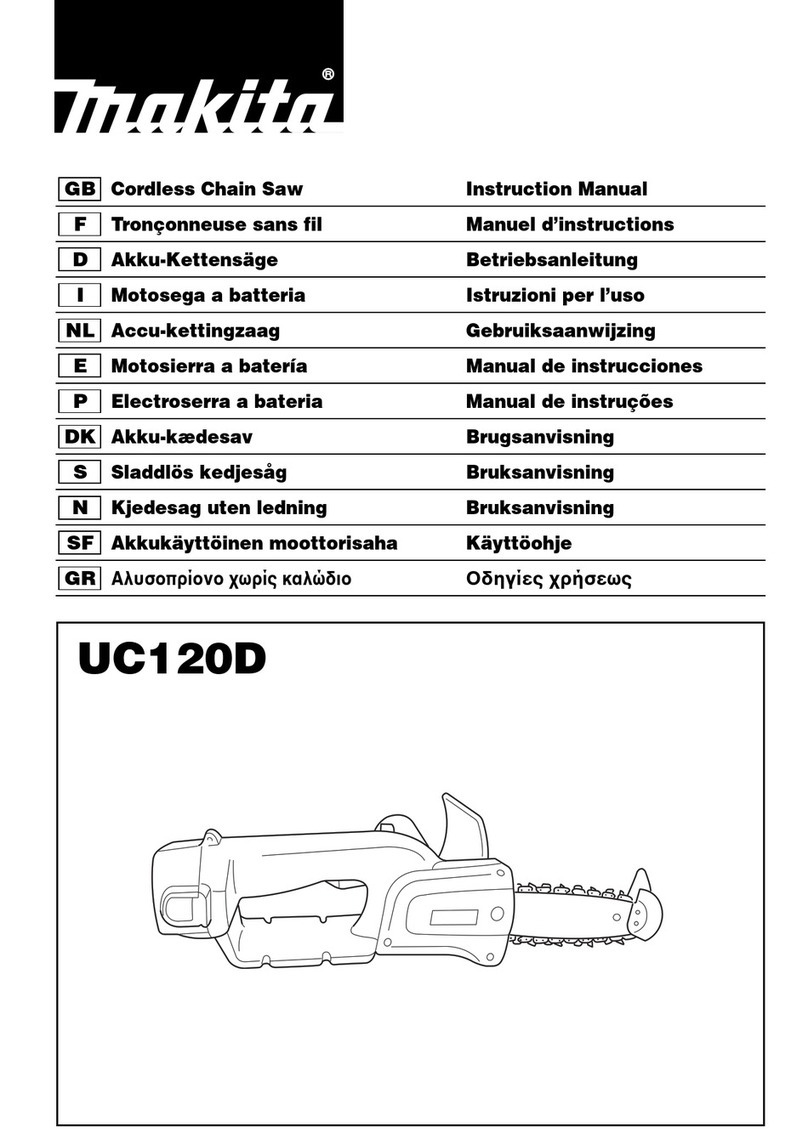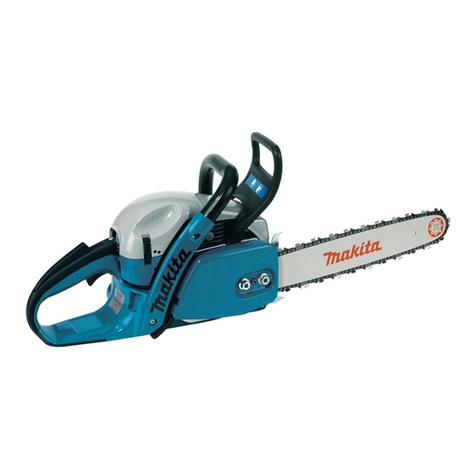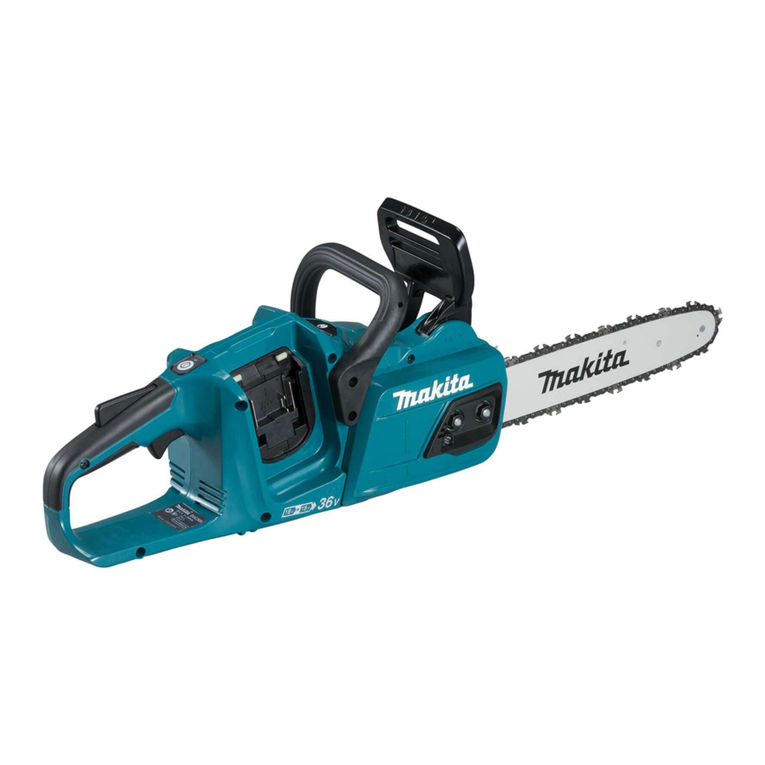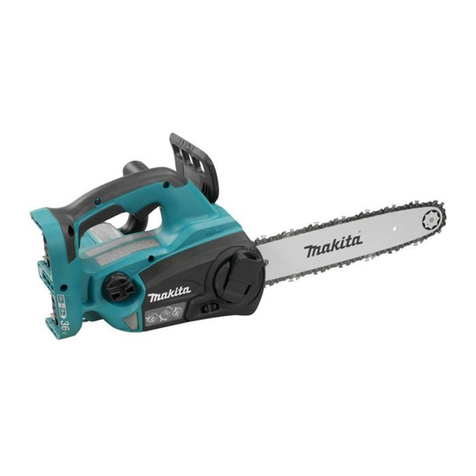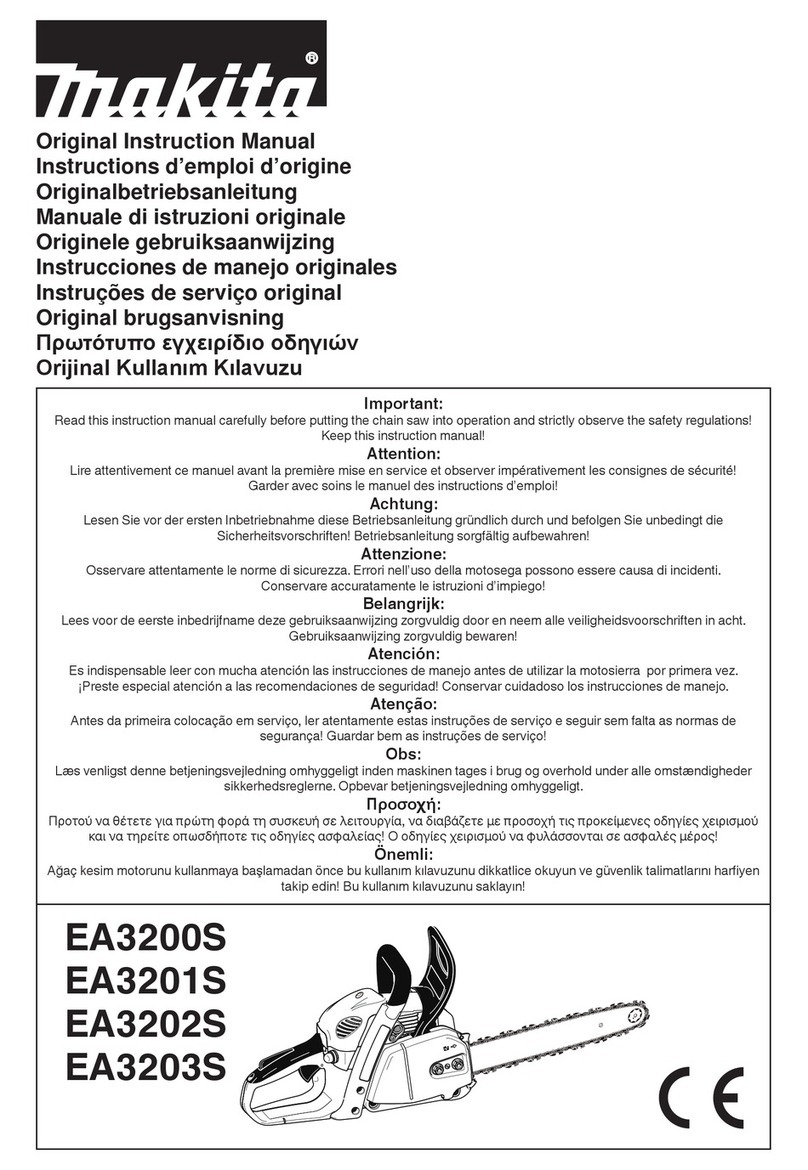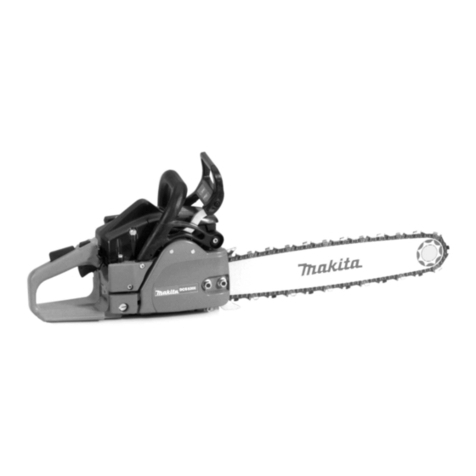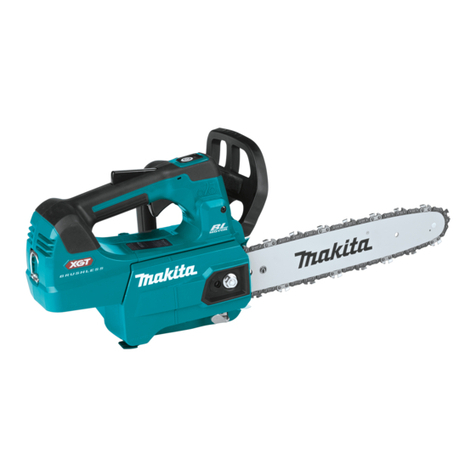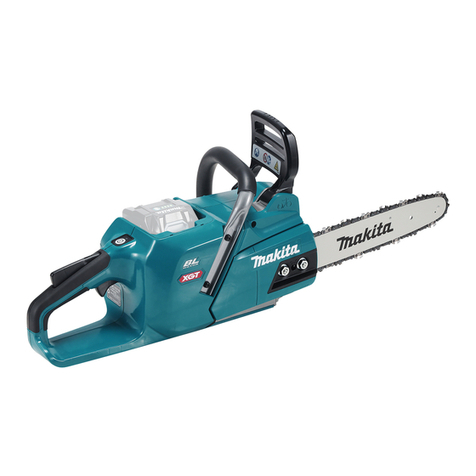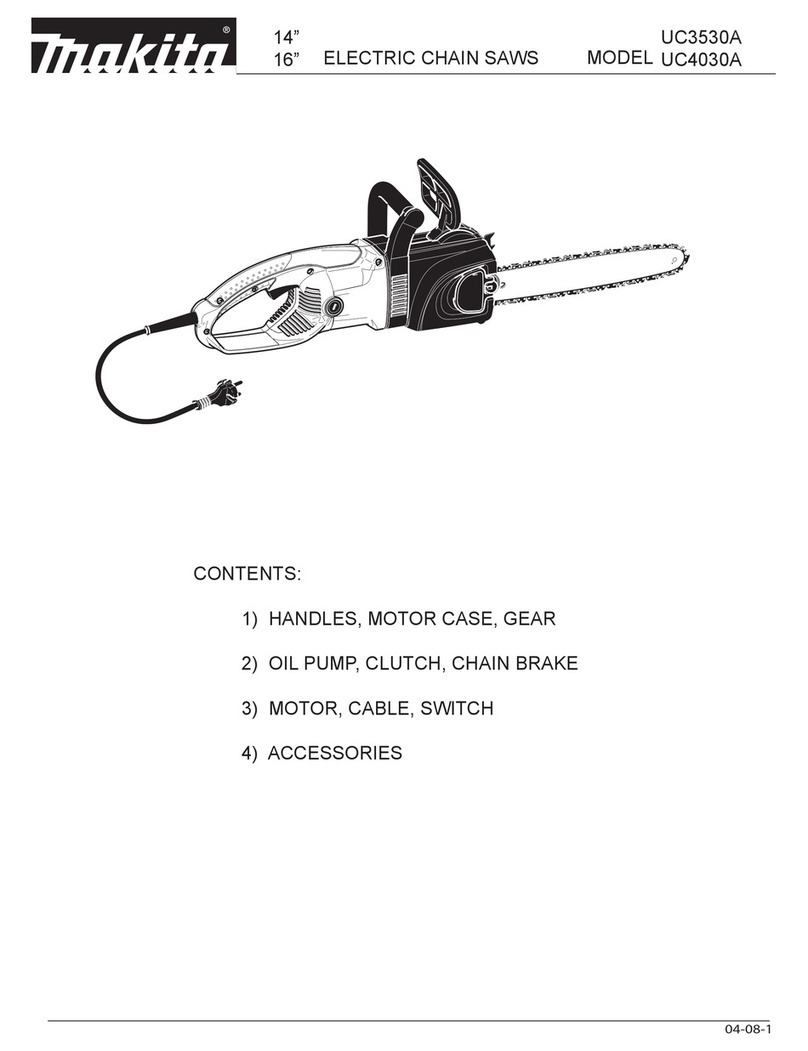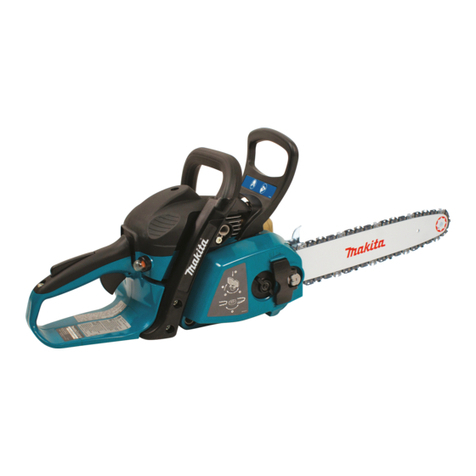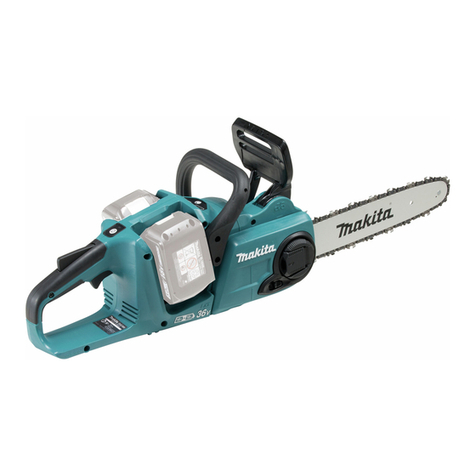
10 ENGLISH
12. Causes and operator prevention of kickback:
Kickback may occur when the nose or tip of the
guidebartouchesanobject,orwhenthewood
closes in and pinches the saw chain in the cut.
Tip contact in some cases may cause a sudden
reverse reaction, kicking the guide bar up and
back towards the operator. Pinching the saw chain
along the top of the guide bar may push the guide
bar rapidly back towards the operator. Either of
these reactions may cause you to lose control of
the saw which could result in serious personal
injury.Donotrelyexclusivelyuponthesafety
devices built into your saw. As a chain saw user,
you should take several steps to keep your cutting
jobsfreefromaccidentorinjury.
Kickback is the result of tool misuse and/or incor-
rect operating procedures or conditions and can
be avoided by taking proper precautions as given
below:
• Maintainarmgrip,withthumbsandngers
encircling the chain saw handles, with both
hands on the saw and position your body
and arm to allow you to resist kickback
forces. Kickback forces can be controlled by
the operator, if proper precautions are taken.
Do not let go of the chain saw.
►Fig.1
• Donotoverreachanddonotcutabove
shoulder height. This helps prevent unin-
tended tip contact and enables better control
of the chain saw in unexpected situations.
• Onlyusereplacementbarsandchainsspec-
iedbythemanufacturer.Incorrectreplace-
ment bars and chains may cause chain
breakage and/or kickback.
• Followthemanufacturer’ssharpeningand
maintenance instructions for the saw chain.
Decreasing the depth gauge height can lead
to increased kickback.
13. Before starting work, check that the chain
saw is in proper working order and that its
condition complies with the safety regulations.
Check in particular that:
• Thechainbrakeisworkingproperly;
• Therun-downbrakeisworkingproperly;
• Thebarandthesprocketcoveraretted
correctly;
• Thechainhasbeensharpenedandten-
sioned in accordance with the regulations.
14. Do not start the chain saw with the chain cover
being installed on it. Starting the chain saw with
the chain cover being installed on it may cause
the chain cover to thrown out forward resulting in
personalinjuryanddamagetoobjectsaroundthe
operator.
Additional Safety Warnings:
1. When using the tool with battery adapter,
be careful not to trip over the cord during
operation.
2. When using the tool with battery adapter, keep
the cord away from obstacles such as a work-
piece and branches during operation. The cord
caughtbyobstaclesmaycauseseriousinjury.
Top handle chainsaw specic safety
warnings
1. This chain saw is designed especially for tree
care and surgery. The chain saw is intended
to be used by properly trained persons only.
Observe all instructions, procedures and rec-
ommendations from the relevant professional
organization. Otherwise fatal accidents may
occur. It is recommend that always using a
rising platform (cherry picker, lift) for sawing
in trees. Rappelling techniques are extremely
dangerous and require special training. The
operators must be trained to become familiar
with safety equipment usage and climbing
techniques. Always use the appropriate belts,
ropes and carabiners when working in trees.
Always use restraining equipment for both the
operator and the saw.
2. Perform cleaning and maintenance before
storage in accordance with the instruction
manual.
3. Ensure safe positioning of the chain saw
during car transportation to avoid fuel or chain
oil leakage, damage to the tool and personal
injury.
4. Regularly check the functionality of chain
brake.
5. Do not ll the chain oil near re. Never smoke
when you ll the chain oil.
6. National regulation may restrict the use of the
chain saw.
7. If the equipment gets heavy impact or fall,
check the condition before continuing work.
Check the controls and safety devices for mal-
function. If there is any damage or doubt, ask
our authorized service center for the inspec-
tion and repair.
8. Always activate the chain brake before starting
the chain saw.
9. Hold the saw rmly in place to avoid skating
(skid movement) or bouncing of the saw when
starting a cut.
10. At the end of the cut, be careful to keep your
balance due to the “drop”.
11. Take into account the direction and speed of
the wind. Avoid sawdust and chain oil mist.
Protective equipment
1. In order to avoid head, eye, hand or foot
injuries as well as to protect your hearing the
following protective equipment must be used
during operation of the chain saw:
— The kind of clothing should be appropriate,
i.e.itshouldbetight-ttingbutnotbea
hindrance.Donotwearjewelryorclothing
which could become entangled with bushes
or shrubs. If you have long hair, always wear
a hairnet!
— It is necessary to wear a protective helmet
whenever working with the chain saw. The
protective helmet is to be checked in regu-
lar intervals for damage and is to be replaced
after 5 years at the latest. Use only approved
protective helmets.
